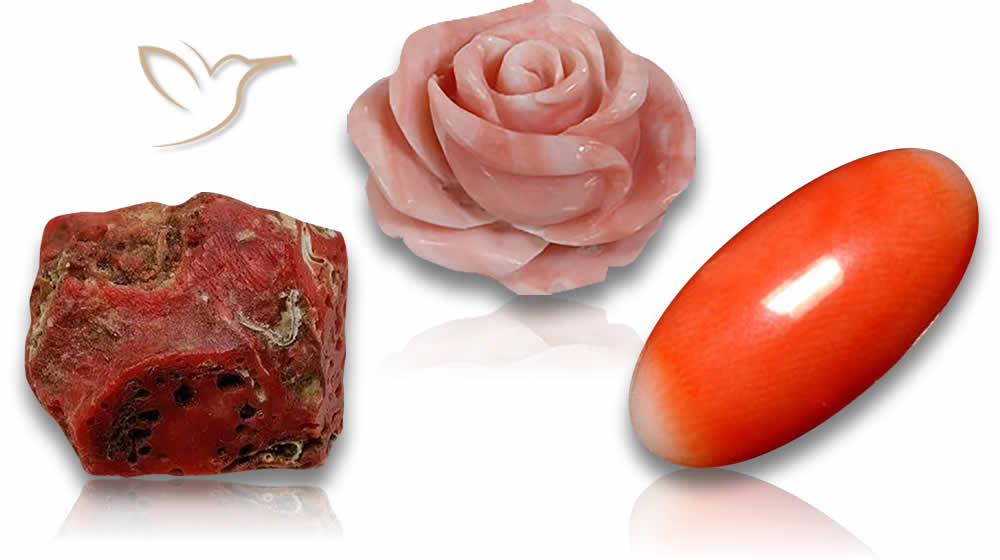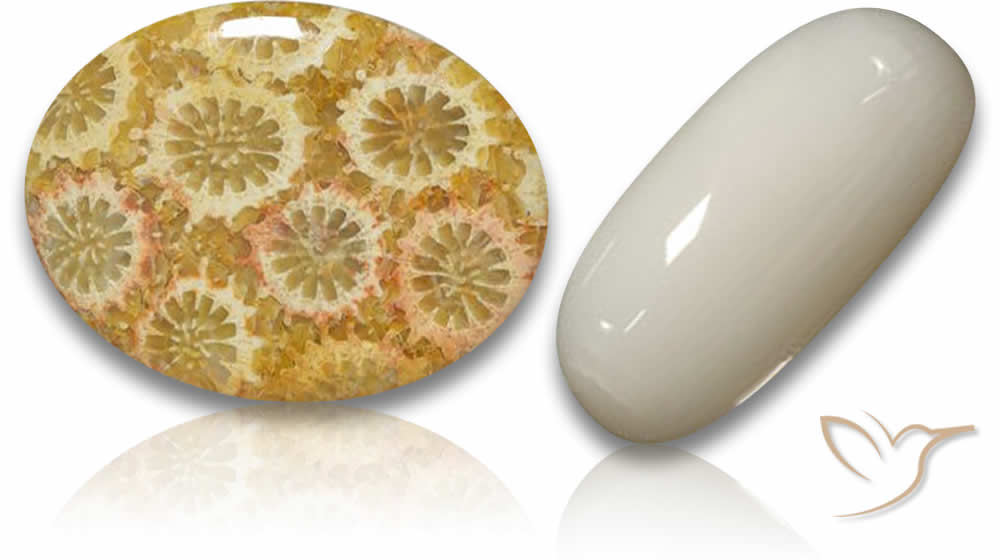Coral Gemstone Benefits and Buying Guide

Are you fascinated by coral gemstones? Do you want to discover the benefits of these unique stones and find high-quality coral gemstones online? If so, you're in the right place! In this article, we will explore the meaning, healing properties, and astrological significance of coral gemstones. Additionally, we’ll provide expert tips on selecting the perfect red coral for your jewelry to match your style and budget.
Coral gemstones offer more than just aesthetic appeal; they possess unique properties that can enhance both physical and emotional well-being. Whether you're a gemstone aficionado or simply seeking to infuse your life with vibrant color and positive energy, you'll find everything you need to know about coral gemstone benefits right here.
Browse coral gemstones for sale here.
Key Takeaways:
- Learn about the benefits of coral gemstone and its healing properties
- Understand the significance of coral gemstone in astrology
- Follow our buying guide to choose the perfect coral jewelry for you
- Buy high-quality coral jewelry online with confidence
- Enhance your overall well-being with the positive energy of coral gemstones
Understanding Coral Gemstones
At first glance, coral gemstones seem like any other gemstone. However, they are not a part of the traditional lineup of gemstones like rubies, sapphires, and diamonds. Coral, in fact, is an organic gemstone produced by marine animals living in warm saltwater oceans.
There are two types of coral: precious coral and common coral. Precious coral is typically red, while common coral can be found in various colors like pink, white, and black. These natural coral gemstones are classified into two categories: immature coral and mature coral. The immature coral is a relatively new formation that is softer in texture and is often found in jewelry. On the other hand, mature coral is an older formation that is harder in texture and often used as decorative gemstones rather than jewelry.
Coral gemstones have been used for centuries in jewelry-making, and they continue to have a significant impact in today's market. Apart from being visually appealing, coral jewelry is often believed to provide physical and emotional benefits to the wearer. Due to the significance that surrounds this organic gemstone, coral jewelry has a higher value and is considered a premium addition to any collection.
Fun Fact: Coral jewelry was first worn by ancient Egyptians, and it is still considered a popular choice among modern jewelry enthusiasts and designers.
The Healing Properties of Coral Gemstone
Coral gemstones are known to possess numerous healing properties that are believed to promote overall well-being. Here, we take a closer look at the specific benefits associated with wearing coral jewelry:
Emotional Healing
Coral gemstones are believed to help improve emotional stability and reduce stress and anxiety. By wearing coral gemstone, individuals may experience a more tranquil and calm state of mind, which can lead to better sleeping patterns, enhanced mood, and greater emotional balance.
Physical Healing
Coral gemstones are also thought to have physical healing properties. They are believed to boost the immune system, stimulate circulation, and help alleviate inflammation and infections. Additionally, coral gemstone is used to manage skin conditions such as eczema and acne.
Relationship Healing
Coral gemstones are also associated with relationship healing, including marital harmony and friendships. They are believed to enhance teamwork, cooperation, and communication, helping individuals to better connect with others and maintain healthy relationships.
Creativity Boost
Wearing coral gemstone may also help boost creativity and artistic expression. This is because coral is believed to stimulate the imagination and encourage self-expression, enabling individuals to tap into their creative potential and produce their best work.
With its numerous healing qualities, coral gemstone is a powerful addition to any jewelry collection. By wearing coral gemstone jewelry, individuals can experience a range of benefits that promote physical, emotional, and relationship healing, as well as boost creativity.
Coral Gemstone in Astrology
If you're fascinated by astrology, you'll be intrigued to know how coral gemstones play a role in it. Coral is associated with the planet Mars, which represents energy, strength, courage, and passion. It's believed that wearing coral gemstone jewelry can help you channel the positive energy of Mars, giving you a boost of motivation and drive.
When it comes to zodiac signs, coral gemstones are perfect for Aries, Scorpio, and Sagittarius. Aries, being the first sign of the zodiac, is known for its energetic and impulsive qualities, which resonate well with the Martian properties of coral. Scorpio, ruled by Mars, can benefit from the courage and strength properties of the gemstone. And Sagittarius, being an adventurous and optimistic sign, can use the positive energy of coral to enhance its creativity and enthusiasm.
If you're wondering how to wear coral gemstone jewelry for astrological benefits, it's recommended to wear it as a ring or pendant close to your skin. This way, the gemstone can interact with your energy field and align its properties with your astrological sign.

Buying Guide: How to Choose the Perfect Coral Jewelry
Are you looking to add some unique and beautiful coral jewelry to your collection? Look no further than our expert buying guide, where we’ll share tips and tricks for choosing the perfect pieces.
Quality Matters
When it comes to coral jewelry, quality is key. Look for pieces that use natural coral gemstones, rather than synthetic or treated varieties. Natural coral offers the highest quality and durability, ensuring that your jewelry will last for years to come.
Consider Color, Shape, and Size
As with any type of jewelry, color, shape, and size can make a big difference in the overall look and feel of your coral pieces. Coral comes in a variety of hues, from deep reds to soft pinks and bright oranges. Choose a color that complements your skin tone and personal style.
For shape, consider a classic round or oval coral cabochon, or opt for something more unique, like a carved coral flower or fish. Size is also important; larger pieces will make a bold statement, while smaller pieces offer a more understated look.
Price Range
Coral gemstones can vary widely in price, depending on their quality, rarity, and size. Expect to pay anywhere from tens to thousands of dollars for natural coral jewelry. Remember, investing in high-quality pieces is worth the cost to ensure your jewelry will last a lifetime.
Where to Buy
When it comes to buying coral jewelry, always choose a reputable seller who specializes in high-quality, natural coral gemstones. Look for sellers with positive customer reviews and certifications from industry organizations.
Do your research and compare prices and reviews to ensure you’re getting the best value for your money.
With these expert buying tips, you’ll be well on your way to choosing the perfect coral gemstone jewelry for your style and budget. Happy shopping!
Conclusion
At the end of our journey into the world of coral gemstones, we hope you now understand the benefits of this beautiful gemstone and how to buy authentic and high-quality coral jewelry online. Coral gemstones are not only aesthetically pleasing but also possess numerous healing properties that can enhance your overall well-being.
Whether you're seeking physical or emotional healing or a connection to astrology, coral gemstones can provide a unique and meaningful experience. By following our buying guide, you can ensure that you select the perfect coral jewelry that suits your preferences and needs.
At our online store, we offer a wide range of coral gemstones that are ethically sourced and of the highest quality. Our prices are competitive, and we offer excellent customer service. So why wait? Browse our collection today and buy your very own coral gemstone online. We guarantee you won't regret it!
Thank you for joining us on this journey, and we wish you all the best in your future endeavors with coral gemstones.
FAQ
What are the benefits of coral gemstones?
Coral gemstones are believed to have numerous benefits, including promoting physical healing, boosting creativity, improving relationships, and providing emotional well-being. They are also associated with vitality, protection, and attracting abundance.
What is the meaning behind coral gemstones?
Coral gemstones are known to symbolize life force energy and vitality. They are associated with passion, courage, and transformation. Coral is believed to bring harmony and balance to the wearer and serve as a protective talisman.
Where can I buy coral gemstones online?
Look for sellers with positive customer reviews and certifications from industry organizations. Make sure to do thorough research and choose a reliable source to ensure the quality and authenticity of the coral gemstones.
What is the price range of coral gemstones?
The price of coral gemstones can vary depending on factors such as quality, size, color, and shape. Generally, high-quality coral gemstones can range from $50 to $500 per carat. It is advisable to set a budget and consider these factors when purchasing coral jewelry.
How do I choose the perfect coral jewelry?
When choosing coral jewelry, consider factors such as quality, color, shape, and size. Look for vivid and even coloring, smooth texture, and well-shaped coral pieces. It is also important to ensure that the coral is ethically sourced and not treated. Take your time to find a reputable seller who offers a wide selection of high-quality coral jewelry.

